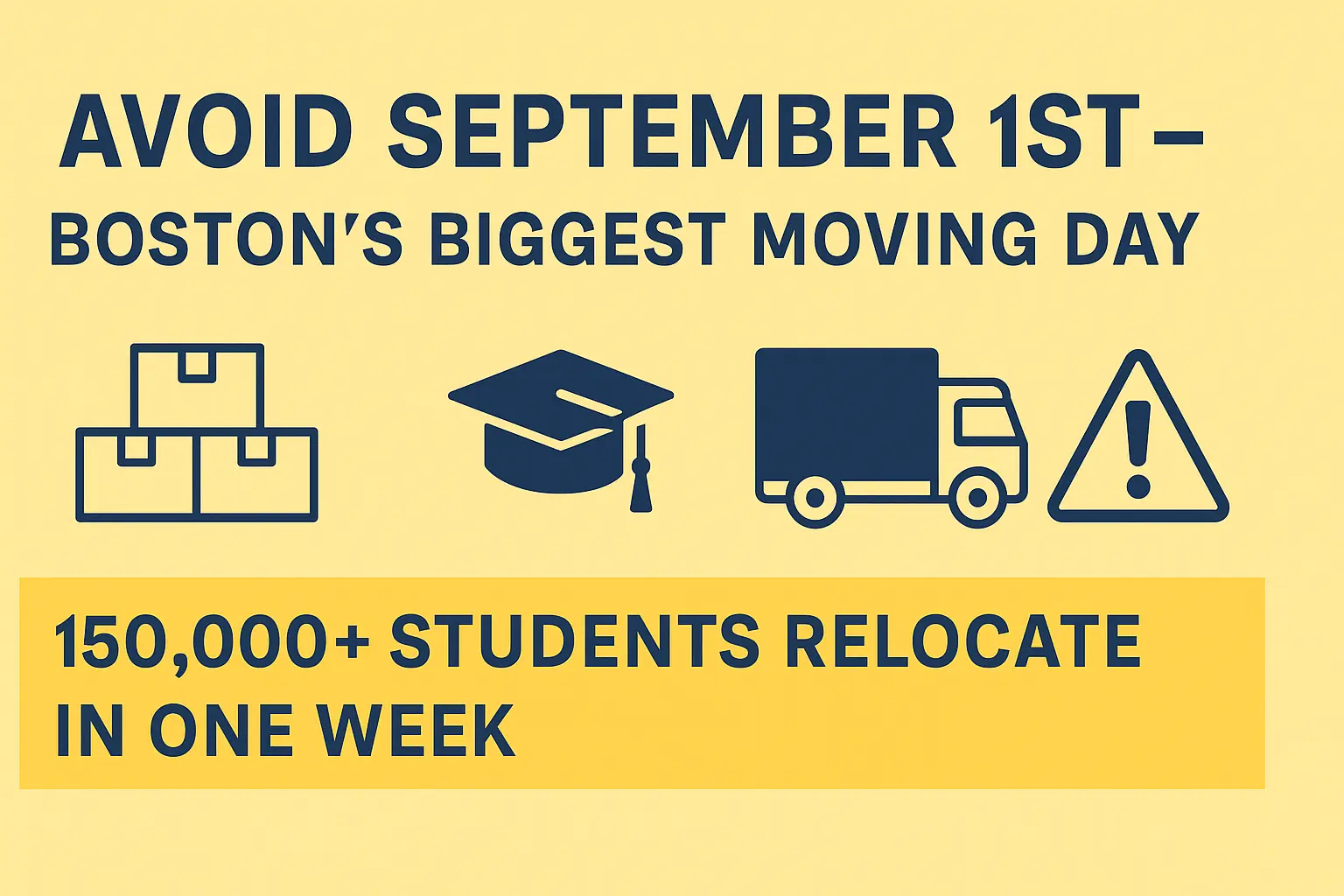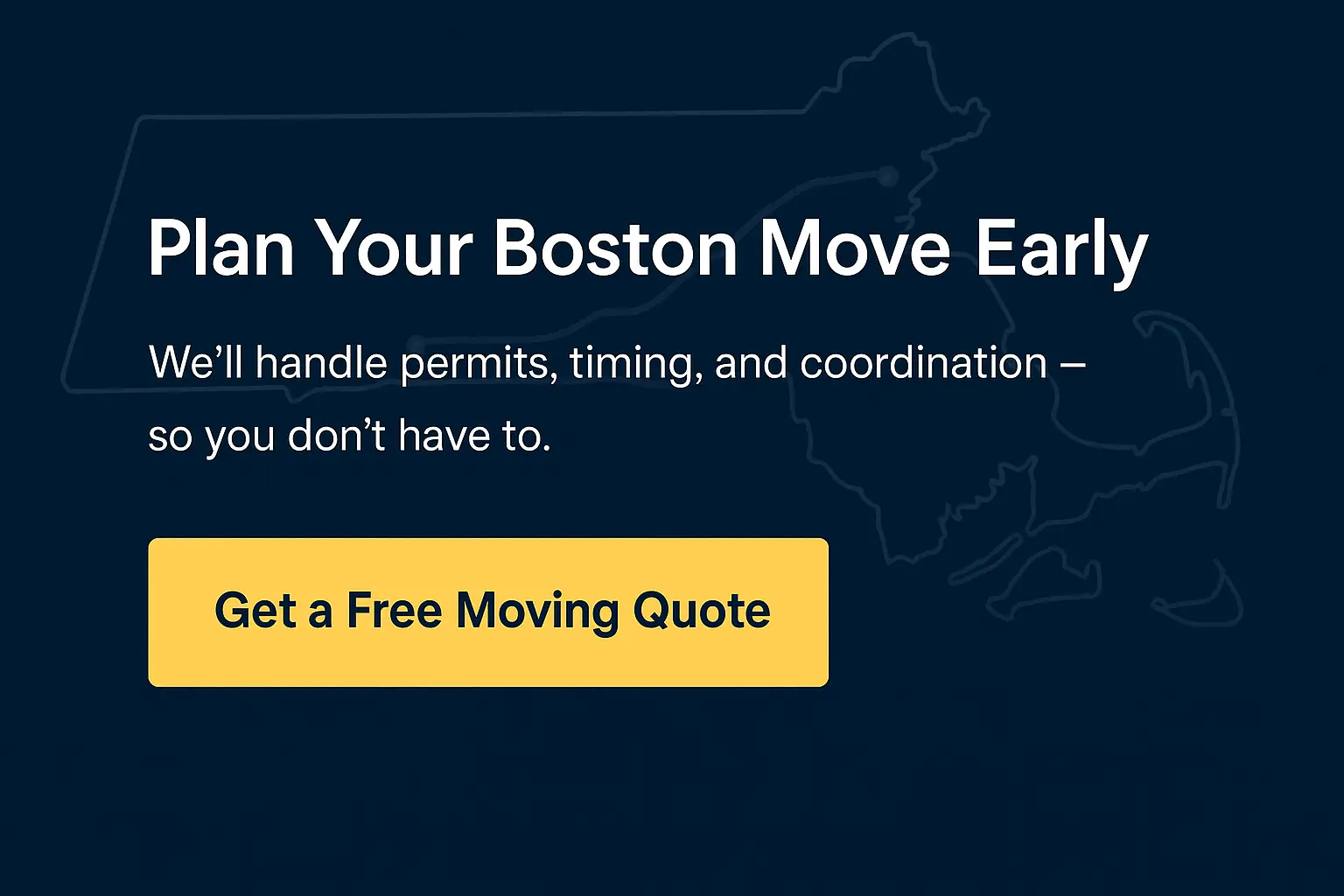Table Of Contents
Moving from New York to Boston? You’re in good company. Thousands of professionals, students, and families make this transition every year, trading Manhattan skylines for brownstones and historic charm.
While both cities share that unmistakable East Coast energy, Boston moves come with their own unique quirks, from navigating narrow colonial streets to timing your arrival around the chaotic September 1st rush.
At Lifestyle Moving, we’ve helped countless New Yorkers settle into their new Boston homes, and yes, we’ve conquered those Beacon Hill stairs more times than we can count. Here’s your complete guide to planning your move with confidence.
What Makes Boston Moves Different
If you’re used to Manhattan’s grid, Boston’s curving colonial layout might feel like a puzzle or an adventure, depending on your patience level.
Most Boston neighborhoods are packed with tight hallways, steep staircases, and limited parking access, especially in historic brownstones and triple-deckers. Furniture maneuvering here is an art form and we’ve perfected it. (Ask us about the time we carried a queen mattress up a third-floor Back Bay walk-up!)
Parking adds another layer. Resident-only zones, time restrictions, and strict enforcement mean you’ll need advance planning and, often, a permit. The good news? Once you understand the system, or hire a mover who already does, it’s easy to stay ahead.
Best Neighborhoods for Newcomers
Boston may be smaller than New York, but its neighborhoods each carry a distinct personality and most have a New York equivalent.
Whether you’re after urban convenience or suburban calm, Boston has a neighborhood that mirrors your NYC lifestyle at a slightly gentler pace.
Seasonal Moving Insights: Why Timing Matters
Here’s what every New Yorker needs to know:
September 1st is the busiest moving day in America and Boston is its epicenter.

Nicknamed “Allston Christmas”, this annual event sees more than 150,000 students changing apartments across the city. Streets clog with moving trucks, discarded furniture, and anxious renters.
If possible, avoid moving between August 25 and September 3. You’ll face higher rates, lower availability, and more stress.
For a smoother experience:
- Best times to move: April–June or late September–early November.
- Book 8–10 weeks ahead during summer to secure your preferred movers.
- Winter (Nov–March) brings better pricing but watch for snow emergencies that limit parking or road access.
Average drive time from NYC to Boston: around 4–6 hours, depending on traffic and loading conditions.
For pricing insights, see our NYC→Boston Cost Guide.
Permits, Certificates of Insurance & Timing
Boston’s historic charm comes with bureaucratic precision. Unlike New York - where double-parking might work in a pinch - Boston requires permits for most moves.
Residential Moving Permits
- Cost: $50–$100/day
- Required for most neighborhoods (Back Bay, South End, Beacon Hill, etc.)
- Must be obtained from the city’s Transportation Department
- Apply at least 48 hours ahead (a week is safer)
We handle this step for our clients.
Certificate of Insurance (COI)
Boston property managers are strict.
A valid COI is required before any move - we provide these automatically. If your mover doesn’t, it’s a red flag.
Elevator Reservations
Most high-rises require scheduled elevator slots (weekday daytime only). Miss your window and you may have to reschedule.
Coordinate with building management as soon as your date is confirmed.
Street Occupancy Permits
Narrow streets in Beacon Hill, North End, and Back Bay may need additional street occupancy permits if the truck blocks traffic. We know which areas require these and arrange them during booking.
Packing and Unpacking in Tight Brownstones
Boston’s brownstones are charming - until you try to fit a sectional through the stairwell.
Here’s how to avoid surprises on move day:
- Measure everything - doorways, stairwells, and hallways.
That Astoria sofa may not fit in a South End parlor floor. - Protect your walls. Use corner guards and padding - Boston landlords are serious about damage fees.
- Label boxes by floor (“2nd Floor Bedroom,” “3rd Floor Office”) to save back-and-forth trips.
- Pack an essentials box: toiletries, chargers, tools, snacks, and paper towels. You’ll thank yourself when you can’t find your toothbrush.
- Consider unpacking services. After a day of climbing triple-decker stairs, having movers unpack and remove boxes is worth every penny.
Pro tip: We’ve had clients say our unpacking service was “the best $300 they ever spent on a move.” You get to enjoy your new Boston apartment the same day you arrive.
Understanding Boston’s Parking Reality
Let’s be honest: parking in Boston requires skill, luck, and patience.
Each neighborhood has its own etiquette - and locals take it seriously.
- Resident Stickers: You’ll need one to park long-term in your neighborhood. Apply at City Hall after you switch your license and registration.
- Winter “Space Saving”: If someone shovels a spot, they’ll mark it with a chair or cone - respect the chair.
- Move-day parking: Even with permits, timing is key. Meters have two-hour limits, and parking enforcement is relentless.
A professional moving team (like ours) will monitor the truck, track timing, and handle all parking permits, so you don’t have to.
Final Tips for a Smooth Transition
Change your license and registration within 30 days. It’s mandatory in Massachusetts.
Embrace the T. Boston’s MBTA is clean, efficient, and reliable - grab a CharlieCard for easy access.
Join your new community. Boston neighborhoods have tight-knit vibes - local groups, farmers markets, and events make it easy to connect.
Plan ahead for your first winter. Buy a shovel and ice melt - seriously.
A Boston move isn’t just about changing zip codes. It’s about adapting to a new rhythm - onGet Your Free Moving Quote Today →Here

Welcome to Boston - we’ll get you home the right way.




.webp)